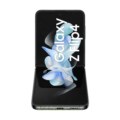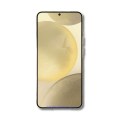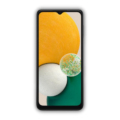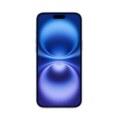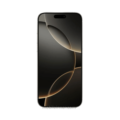- Home
- All Phones
- SAMSUNG
- Samsung Galaxy Tab S9
Samsung Galaxy Tab S9
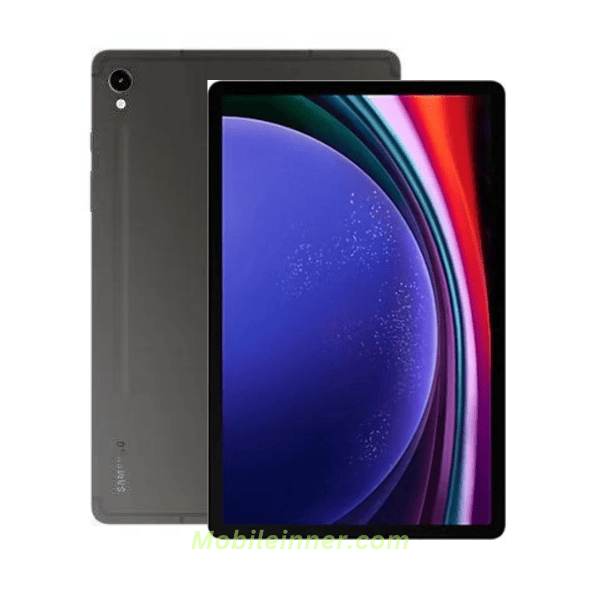

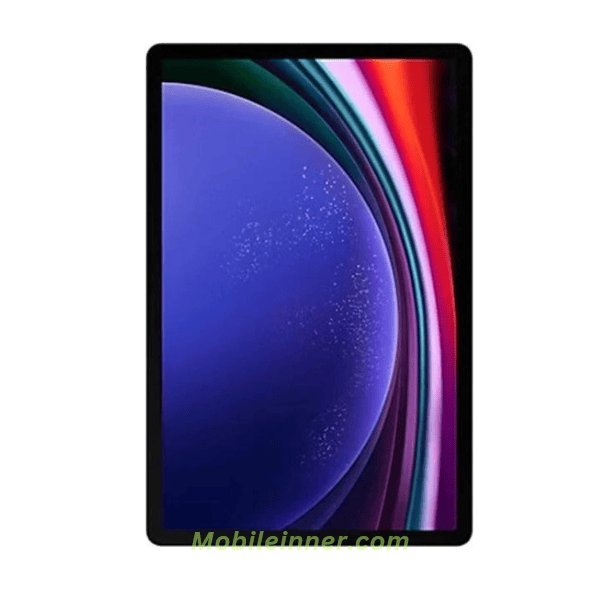
Full specification
General
| Device Type | Tab |
| Released | 11 August 2023 |
Design
| Dimensions | 254.3 x 165.8 x 5.9 mm |
| Weight | 498 g |
| Build | Glass front, aluminum back, aluminum frame |
| IP Rating | IP68 |
| Colors | Beige, Graphite |
Display
| Display Type Display Technology => A number of display technologies and types used in mobile phones => TFT (Thin Film Transistor), IPS (In-Place Switching), OLED (Organic Light Emitting Diode), AMOLED (Active-Matrix Organic Light-Emitting Diode), Super AMOLED (an even advanced version of AMOLED), Resistive Touchscreen (Resistive touchscreens contain two layer of conductive material with a very small gap between them which acts as a resistance), Capacitive Touchsceen (Capacitive touchscreen technology consists of a layer of glass coated with a transparent conductor) | Dynamic AMOLED 2X, 120Hz |
| Size | 11.0 inches |
| Resolution | WQHD+, 1600 x 2560 pixels |
| Pixel Density Pixel Density (PPI) is refers to the concentration of pixels on a particular display, measured in pixels per inch (ppi). Pixel density is calculated by dividing the diagonal pixel resolution of a display by its diagonal size, higher pixel density better display quality. | 274 ppi |
| Protection Display Protection => Gorilla Glass is a special alkali-aluminosilicate glass shield with exceptional damage resistance that helps protect mobile displays from scratches, drops, and bumps of everyday use, It is always better to go for a smartphone with Gorilla Glass for that added protection and peace of mind. | Corning Gorilla Glass |
| Features | Eye Care Display, HDR10+ |
Software
| OS OS => Every computer system run on a base software called Operating System (OS). Operating System controls all basic operations of the computer (such as smartphone, PDAs, tablet computers and other handheld devices). The Operating System allows the user to install and run third party applications (apps), apps are used to add new functionality to the device. | Android 13 |
| UI UI or user interface of a device is the look and feel of the on-screen menu system. How it works, its color scheme, how it responds to button presses, all of these things are part of the user interface. | One UI 5.1 |
Hardware
| Chipset Chipset is a group of integrated circuits designed to perform one or a more dedicated functions, often with real time computing constraints, Popular smartphones are equipped with more advanced embedded chipsets that can do many different tasks depending on their programming. | Qualcomm SM8550-AB Snapdragon 8 Gen 2 (4 nm) |
| CPU CPU (Central Processing Unit) mostly known as processors, CPU processes instructions in order to carry out certain functions that make your device operate properly. Processors are often described as the brain of computers, smartphones and tablets, Smartphones and tablets rely on processors to carry out their every task, Processors are an incredibly important factor in selecting any type of computing device, including your smartphone. | Octa-core (1x Cortex-X3 • 3.36 GHz + 2x Cortex-A715 • 2.8 GHz + 2x Cortex-A710 • 2.8 GHz + 3x Cortex-A510 • 2.0 GHz) |
| GPU GPU (Graphics Processing Unit) is a single-chip processor designed to rapidly manipulate and alter memory to accelerate the creation of images in a frame buffer intended for output to a display, This includes things such as lighting effects, object transformations, and 3D motion. | Adreno 740 |
Memory
| Card Slot Memory Card Slot is a special slot for inserting a memory card. Memory cards allow you to expand the phone's built-in memory, A memory card (sometimes called a flash memory card or a storage card) is a small storage medium used to store data such as text, pictures, audio, and video, for use on small, portable or remote computing devices such as mobile phones, mp3 players, digital cameras. | microSDXC, dedicated slot |
| RAM RAM (Random Access Memory) is a type of computer memory that can be accessed randomly, any byte of memory can be accessed without touching the preceding bytes that allows information to be stored and accessed quickly from random locations. RAM is the most common type of memory found in computer systems, smartphones, tablets and other electronic devices. | 8 GB, 12 GB |
| RAM Type | LPDDR5X |
| ROM Internal Storage is a data storage space (flash memory) mostly used in smartphones, tablets and other electronic devices where operating system, apps, music, photos, videos, files and other user data Is stored. | 128GB, 256GB |
| Type Design Type called form factor refers to a mobile phone's size, shape, and style as well as the layout and position of major components of phone. There are three major form factors seen in mobile phones => bar phones, folding phones and sliding phones. | UFS 3.X |
Camera
| Primary Camera is able to capture photographs and usually videos, The most important characteristics of a camera are the resolution (measured in megapixels), lens focus type (fixed or automatic), higher megapixel cameras are known to capture higher quality photos, but not always a good measurement of the photos quality. |
13 MP, f/2.0, 26mm (wide), AF (Sensor- , Sensor size- 1/3.4, Pixel size- 1.0µm) |
| Video |
1080p@30fps, 4K@30/60fps |
| Features | LED flash, HDR, panorama |
| Selfie | 12 MP, f/2.4, 120˚ (ultrawide) |
| Video |
1080p@30fps, 4K@30/60fps |
| Features | HDR |
Media
| FM Radio | No |
| Loudspeaker | Yes, Stereo speakers |
| 3.5mm Jack | No |
| Alert Types | Vibration & Ringtone |
Connectivity
| Bluetooth Bluetooth is a wireless communications technology for exchanging data between mobile phones, headsets, computers and other network devices over short distances without wires, Bluetooth technology was primarily designed to support simple wireless networking of personal consumer devices. | 5.3, A2DP, LE |
| Wi-fi Wi-Fi is a popular wireless networking technology using radio waves to provide high-speed network connections that allows devices to communicate without cords or cables, Wi-Fi is increasingly becoming the preferred mode of internet connectivity all over the world. | Wi-Fi Direct, Wi-Fi 802.11 a/b/g/n/ac/6e, tri-band |
| Wi-fi Hotspot | |
| USB | USB Type-C 3.2, magnetic connector |
| GPS GPS The Global Positioning System is a satellite-based radio navigation system, GPS permits users to determine their position, velocity and the time 24 hours a day, in all weather, anywhere in the world, In order to locate your position, your device or GPS receiver must have a clear view of the sky. | Yes - GPS, GLONASS, BDS, GALILEO |
| NFC NFC (Near field communication) is a set of standards for smartphones and similar devices to establish peer-to-peer radio communications with each other by touching them together or bringing them into proximity, usually no more than a few inches. | |
| Infrared Infrared connectivity is an old wireless technology used to connect two electronic devices. It uses a beam of infrared light to transmit information and so requires direct line of sight and operates only at close range. |
Features
| Sensors Sensors are electronic components that detects and responds to some type of input from the physical environment. The specific input could be light, heat, motion, moisture, pressure and location, The output is generally a signal that is converted to use in computing systems, a location sensor, such as a GPS receiver is able to detect current location of your electronic device. |
Fingerprint (under display, optical), accelerometer, gyro, proximity, compass Wireless Samsung DeX Stylus, 2.8ms latency |
Network
| Technology | GSM / HSPA / LTE / 5G |
| 2G Network | GSM 850 / 900 / 1800 / 1900 |
| 3G Network | HSDPA 850 / 900 / 1700(AWS) / 1900 / 2100 |
| 4G Network | B1, 2, 3, 4, 5, 7, 8, 12, 17, 20, 26, 28, 38, 40, 41, 66 |
| 5G Network | n1, 3, 5, 7, 8, 28, 38, 40, 41, 78 SA/NSA/Sub6 |
| SIM SIM (Subscriber Identity Module) is a small card that contains mobile network subscriber's account information. This allows the phone using the card to attach to a mobile network. The SIM card is most commonly associated with GSM and UMTS mobile networks. Moving a SIM card from one phone to another allows a subscriber to switch mobile phones without having to contact their mobile network carrier. SIM cards can also be used by a phone to store limited amounts of data, such as phone numbers and text messages. | Nano SIM |
| Dual SIM | No |
| Speed | HSPA 42.2/5.76 Mbps, LTE-A, 5G |
Battery
| Battery Type Battery Type => Cell phones run on various kinds of batteries depending on the manufacturer, phone size or shape and features. There are basically four types of cell phone batteries => Lithium Polymer, Lithium Ion, Nickel Metal Hydride and Nickel Cadmium. | Li-Poly (Lithium Polymer) |
| Capacity Battery Capacity is a measure (typically in Amp-hr) of the charge stored by the battery, and is determined by the mass of active material contained in the battery. The battery capacity represents the maximum amount of energy that can be extracted from the battery under certain conditions. | 8400 mAh |
| Charging | 45W Fast charging |
| Wireless Wireless Charging (Inductive Charging) uses an electromagnetic field to transfer energy between two objects. This is usually done with a charging station. Energy is sent through an inductive coupling to an electrical device, which can then use that energy to charge batteries or run the device. | No |
| Placement | Non removable |
| Standby Standby Time is the total amount of time that you can leave your is fully charged, turned on and ready to send and receive calls or data transmissions before completely discharging the battery. | NA |
Samsung Galaxy Tab S9 Overview
The Samsung Galaxy Tab S9 is Samsung’s latest flagship Android tablet, featuring top-of-the-line specs and a sleek, premium design. Announced in August 2023, the Galaxy Tab S9 looks to compete with the best from Apple and other tablet makers.
The Galaxy Tab S9 sports an all-metal and glass design that looks modern and elegant. It measures 5.9mm thin and weighs 498g, making it slim and lightweight enough for comfortable one-handed use. The Tab S9 is also IP68 water and dust resistant. It has an impressive 11-inch WQHD+ Dynamic AMOLED display with a fast 120Hz refresh rate. The screen features vivid colors and deep blacks thanks to the AMOLED technology. With a 1600 x 2560 pixels resolution and a pixel density of 274 ppi, details and text look incredibly sharp on the Galaxy Tab S9.
Under the hood, the Galaxy Tab S9 is a processing powerhouse. It’s powered by the latest Qualcomm Snapdragon 8 Gen 2 chipset, featuring an octa-core CPU and Adreno 740 GPU. This cutting-edge chip delivers blazing-fast speeds and excellent multitasking capabilities. The Tab S9 has 8GB or 12GB of RAM and up to 256GB of internal storage. It runs Android 13 with Samsung’s One UI 5.1 custom interface.
The Galaxy Tab S9 has a 13MP primary camera with AutoFocus and LED flash for photography. It can shoot up to 4K video at 60fps. For selfies and video calls, there is a 12MP ultra-wide front camera. A large 8400mAh battery powers the tablet and supports 45W fast charging. Connectivity options on the Tab S9 include Wi-Fi 6E, Bluetooth 5.3, USB-C, and 5G cellular data.
Overall, the Samsung Galaxy Tab S9 impresses with its vivid AMOLED display, powerful performance, long battery life, and sleek design. It’s ideal for productivity, gaming, streaming, and more. With top-notch hardware and the latest Android software, the Tab S9 is primed to be one of the best Android tablets in 2023.
Here you can see the pros and cons of Samsung Galaxy Tab S9 at a glance
User Reviews
Disclaimer Note
We cannot guarantee that the information on this page is entirely 100% accurate.

